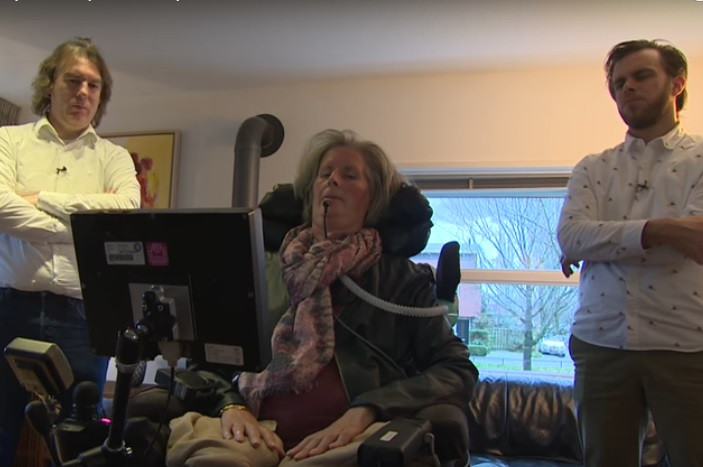Brain implant lets ALS sufferer with locked in syndrome speak using only her mind
Brain implant allows Dutch woman Hanneke de Bruijne to operate a speech computer wirelessly.
A woman with locked in syndrome as a result of amyotrophic lateral sclerosis (ALS) has been able to speak again thanks to a brain implant that lets her wirelessly transmit her thoughts to a computer. The breakthrough means Hanneke de Bruijne can talk to her family at home for the first time in a year.
ALS, also known as Lou Gehrig's disease, is a degenerative condition affecting the nerve cells in the brain and spinal cord that control voluntary muscle movement. At present there is no cure and most people die within three to five years from the onset of symptoms.
De Bruijne was diagnosed with ALS in 2008. In September last year, when she was 58, she was suffering from locked in syndrome from late stage ALS. At the time, her only means of communication was through eye movements and blinks to say yes or no. At this point, she gave consent for researchers from the University Medical Centre (UMC) Utrecht to place an implant in her brain to help her communicate.
Over several months, she and the team worked to get the settings of the implant in line with her brain signals. She then underwent an operation where electrodes were placed on her brain through small holes in her skull. A transmitter was placed just below her collarbone. The transmitter receives signals from the electrodes then amplifies them to wirelessly send them to a computer, which relays the signals as speech.

Following the operation, doctors worked with de Bruijne to monitor and adjust the settings to get the system as accurate as possible. She can now use the speech computer at home on her own without the help of the team.
To operate the computer, de Bruijne moves her fingers in her mind. The changes to the brain signals are relayed and converted into a mouse click. On a screen, there is an alphabet through which she can spell out words and sentences.
The results of the research have been published in the New England Journal of Medicine. "This is a major breakthrough in achieving autonomous communication among severely paralyzed patients whose paralysis is caused by either ALS, a cerebral haemorrhage or trauma," said Nick Ramsey, professor of cognitive neuroscience at UMC Utrecht. "In effect, this patient has had a kind of remote control placed in her head, which enables her to operate a speech computer without the use of her muscles."
If the team can replicate their success in two more ALS patients, they hope to begin a larger-scale trial. "We hope that these results will stimulate research into more advanced implants, so that someday not only people with communication problems, but also people with paraplegia, for example, can be helped," Ramsay said.
© Copyright IBTimes 2025. All rights reserved.






















